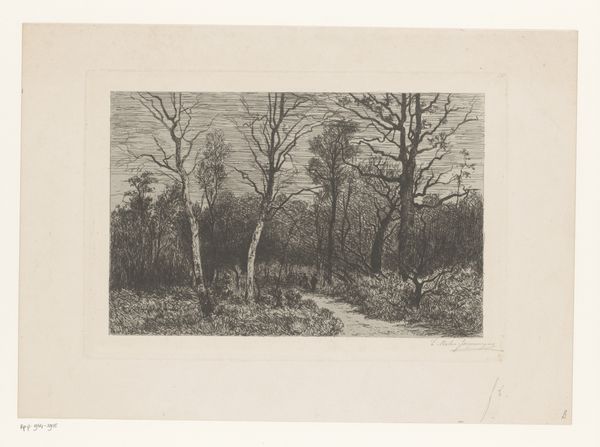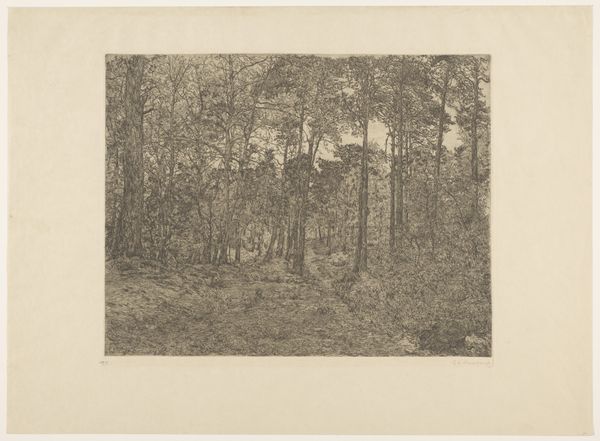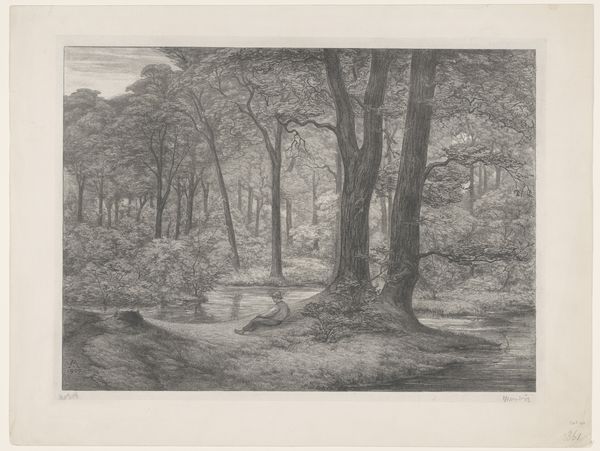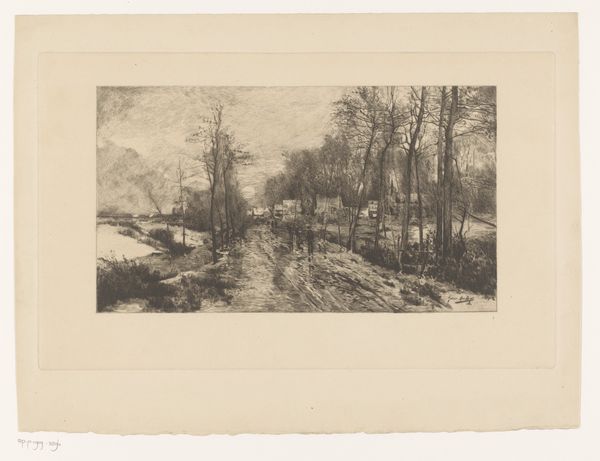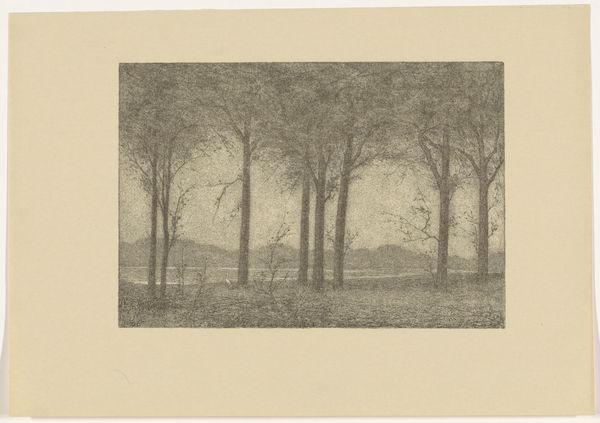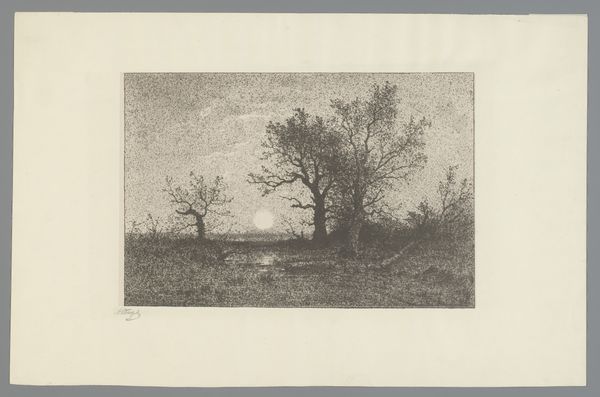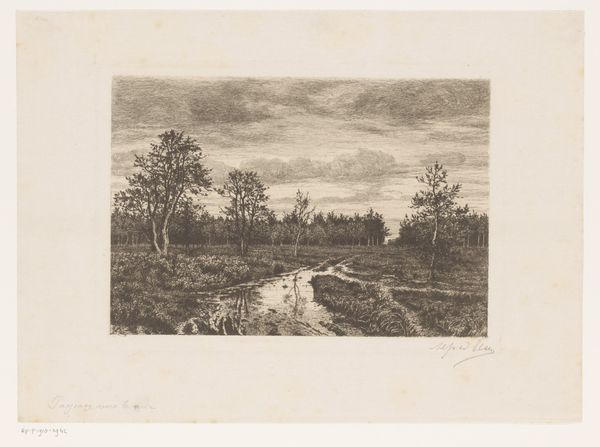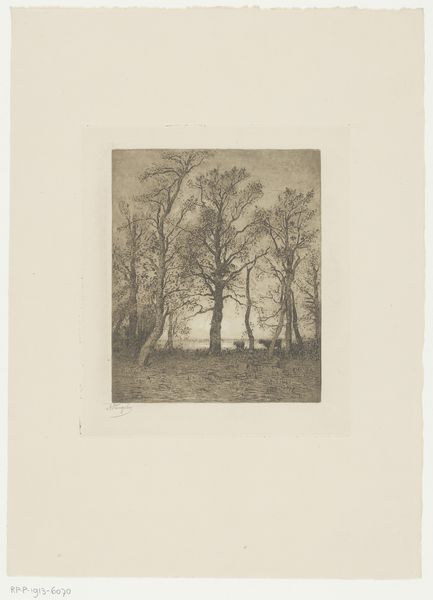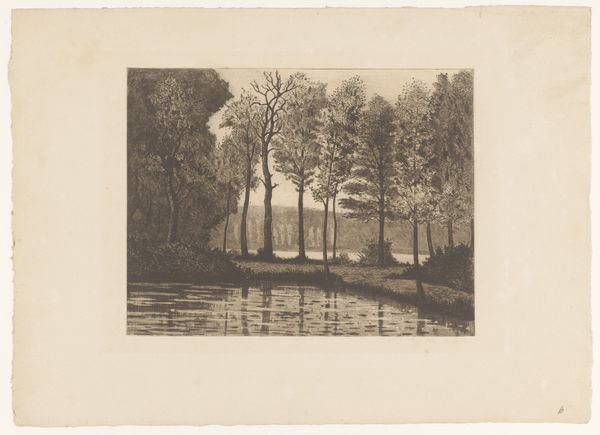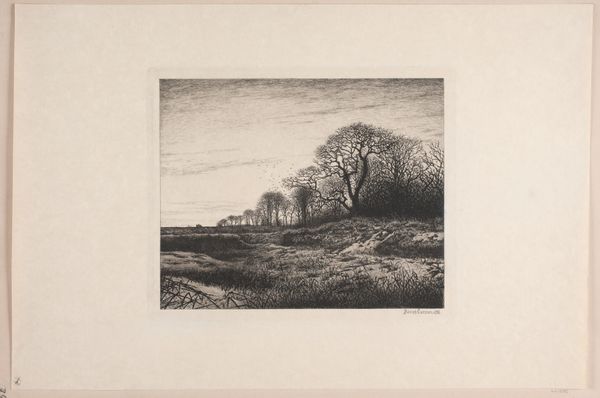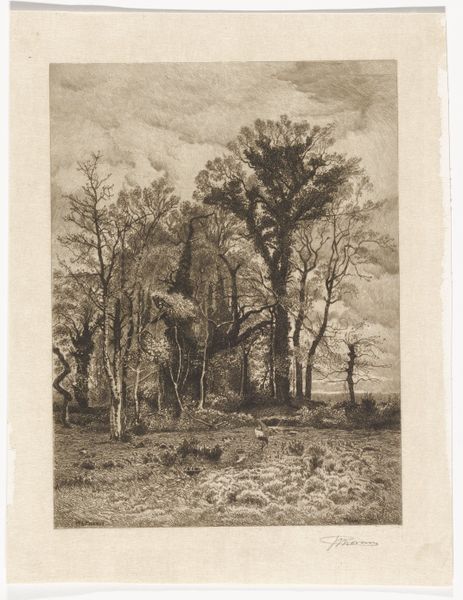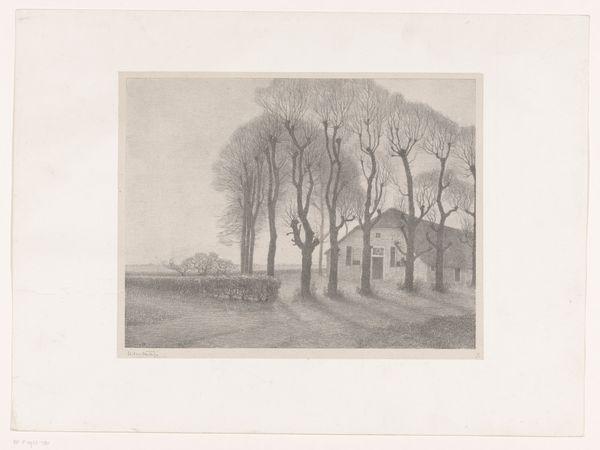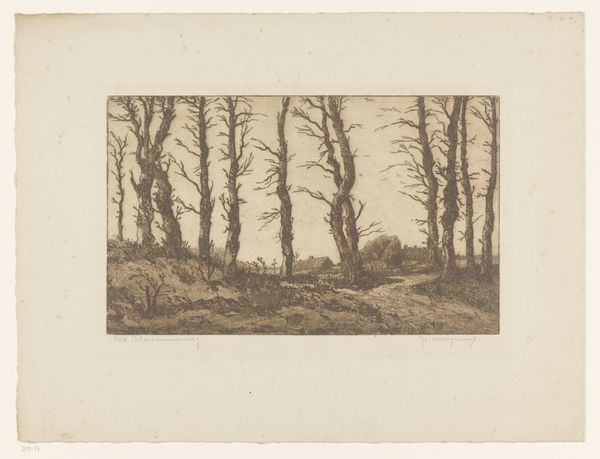
drawing, print, paper, graphite
#
drawing
# print
#
landscape
#
paper
#
graphite
Dimensions: height 478 mm, width 636 mm
Copyright: Rijks Museum: Open Domain
Editor: This is Alexander Shilling's "Bosrijk landschap," created in 1891 using graphite on paper – a print. I’m immediately struck by the stillness; it's almost dreamlike, very subtle in its tones. What stands out to you? Curator: The image is indeed still. The delicate strokes and muted tones evoke a sense of tranquility, perhaps even a touch of melancholy. The copse, that dark grove or thicket of trees, can represent the unconscious, untamed aspects of the psyche. Do you find that resonates here? Editor: Absolutely, especially with the limited palette. It feels introspective rather than outwardly expressive. I’m wondering about the choice of landscape as a subject during that period. Curator: Landscape in the late 19th century wasn't merely about depicting nature. Artists often used it to explore interior emotional states or reflect cultural anxieties. The forest itself, think of fairy tales, represents a journey, often into the unknown self. Does this composition prompt you to imagine such a journey? Editor: Yes, actually. The subtle path leading into the trees definitely gives that impression. Curator: Notice, too, the bare trees silhouetted against the pale sky. These could symbolize vulnerability and the transient nature of life. It is this understanding of cultural memory which offers further understanding of landscape art. Editor: That's fascinating. I hadn't considered the symbolic weight of the trees themselves. This piece is far more layered than I initially thought. Curator: It demonstrates the ability of imagery to embed cultural memories and emotional narratives, adding meaning with each interpretation. Editor: I definitely have a greater appreciation for how symbols can contribute to cultural understanding after diving into this artwork with you!
Comments
No comments
Be the first to comment and join the conversation on the ultimate creative platform.
